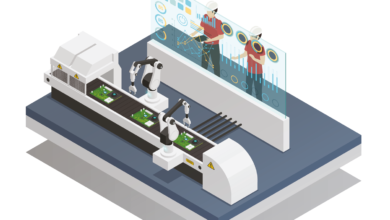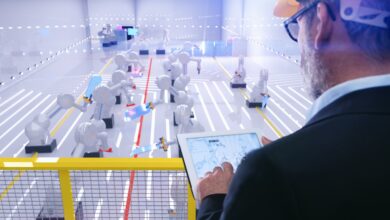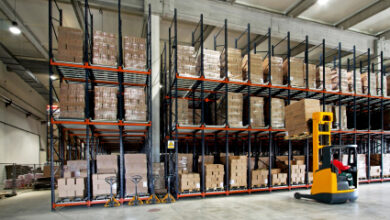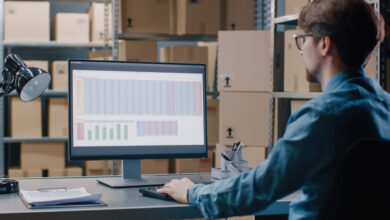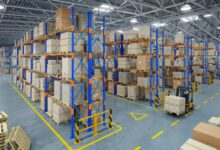What is the Best Software Solution for Production Planning?

Production planning is the desire of every manager who wants to carry out all production processes within the factory smoothly and efficiently. If production planning is done correctly and accurately, it extends the visibility of a factory, increases the on-time delivery rate, keeps inventory levels to a minimum, and takes a significant step towards increasing profitability. Even though planners hope to rely on Excel spreadsheets for production planning and control, increasing product variety, shrinking lot sizes, and complex process routes now require more robust tools. Choosing the right production planning software is critical for error-free and consistent operation of the planning cycle.
How to Choose the Most Suitable Production Planning Software for Your Needs?
Naturally, manufacturers who want the best of everything should select production planning software that will provide the best of everything. Since this crucial decision affects all stages of production planning and control, it must be made carefully. If such software lacks the necessary features, planning calculations will be incorrect, leading to increased stocks, loss of efficiency, low productivity, and overtime.
The question factory managers should ask here is what features must be present in a production planning software.
- Ease of Use and Visualization: The more visual a production planning software is, the easier it will be to use. This is an important motivation for planners and everyone who needs to use the outputs of this software. Incomprehensible, complex software can push employees back to traditional Excel spreadsheets and cumbersome modules of ERPs. A software with easy usability and visual content is more appealing in terms of comprehensibility, thus encouraging employees. Employees providing easy usability will increase the efficiency of plans and schedules, thereby enhancing the adequacy of the production system. If the advanced planning software you are considering cannot visually present the results of its planning efforts, you will ultimately have invested time and money in a system that will not be used.
- Speed: Operations in a factory must always proceed quickly and under control. Therefore, the software used must also be able to function quickly and agilely. Because a plan must be quickly revised due to sudden and unexpected situations in the field. Since the traditional planning process does not have this speed, situations in the factory may have changed again before the first revision is completed. This is a situation familiar to people in production. Therefore, instead of wasting time on programs with low flexibility in revising plans, a dynamic software can be preferred to provide dynamic planning.
- Flexibility: Advanced Planning Software is implemented to increase and accelerate the efficiency of a factory’s production planning. Each factory has its own unique workflow, different working conditions, and independent factors. The software you choose for production planning must be flexible enough to adapt to the factory because factory conditions cannot conform to planning software; planning software must conform to the realities of production. No factory should compromise its entire operation just to make production planning software work properly. For both short and long-term success, this is absolutely necessary.
- Integration: Integration with existing IT systems, such as ERP and MES, where all kinds of data can be collected, is essential in the production world. These systems are interconnected and come together at one point to create a successful production planning and control infrastructure. This system is not just about production planning and scheduling; it has many other connections. One of the most important technological advances for a production system is that these different software layers integrate with each other. For example, a production planning and control infrastructure also covers Enterprise Resource Planning (ERP), Material Requirements Planning (MRP), Manufacturing Execution Systems (MES). None of these can work together without working harmoniously. Therefore, when choosing production planning software, it must be easy to integrate with other systems. Because over time, as other IT systems are updated, reintegration will need to be done in parallel with them. Since this is an endless cycle, you must ensure that integration work can be done with minimum effort.
- Realism: For a production system to be planned, it must be modeled in the software environment down to the finest detail. If due to deficiencies in the software you use, you have to make rounding, simplification, or omissions when modeling your production, the resulting plan will be incorrect and will not reflect the real situation. Production planning software that cannot fully model the dynamism of the production site is useless and has no validity. For example, software that cannot calculate inventory management correctly and realistically will cause the disruption of the production system. If inventory management is not done properly, production orders for products with no material will circulate in the field, or orders with a long time before the deadline will be produced, increasing the need for storage. As a result, expenses will increase, productivity will decrease, and the continuity of production will be disrupted. All these variables affecting production performance must be calculated by production planning software.
When Deciding to Purchase Production Planning Software
In summary, for production planning software to be beneficial to the production process, it needs multiple features. Each condition affects each other, and if one is missing, there is no possibility that the software is the “best option.” For example, a APS software that cannot integrate with ERP will not be useful for the production system. Or, although a software is fast, it will not be useful if it is not easy to use. In this case, the best software for you is the one that provides the most accurate conditions for your production planning and control activities. Thinking of all these features as indispensable is recommended. In fact, it would be a very good idea to do a pilot project with your potential suppliers to see if the features we listed are not only in PowerPoint presentations but also actually exist.
Through these pilot studies, you can see how each planning problem will be solved. For example, as Dijitalis, we are very ambitious in solving complex planning problems. We showcase our sample solutions on our YouTube channel. You can watch our planning videos on our channel to learn more.
